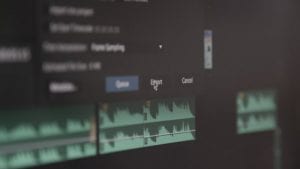Elizabeth Bower was so pleased with the voice-over showreel we produced for her that she referred us to Robert Wolstenholme. Robert is theatre director with a natural vocal ability. Having done voice over work for The Hive, a kid’s cartoon currently on ITV, he was looking for more voice over work. So he decided to put together a voice over reel to send to agents.
Recording a Voice Over Showreel
 We took Robert to the studio and started by using a few exercises we know to warm his voice up (see below). Some suited his voice perfectly, others which didn’t immediately, just to see how he could stretch his range. It was fun seeing how he could change his voice and tone, accordingly!
We took Robert to the studio and started by using a few exercises we know to warm his voice up (see below). Some suited his voice perfectly, others which didn’t immediately, just to see how he could stretch his range. It was fun seeing how he could change his voice and tone, accordingly!
Back at base, we added appropriate music and relevant sound effects, setting the scene for each script he performed. We then exported this as two files; one uncompressed and the other as a smaller file. We also gave him separate reels for narration and radio ads, so he could target his applications.
Overall another great session which Robert had a great time doing. So if you’re looking to break into voice over work and need a sample voice-over showreel to get the ball rolling, get in touch.
“Many thanks again for your time and help – I’m enjoying this process, even if listening to myself is sometimes excruciating”
– Robert Wolstenholm
Book a call to get your voice over showreel recordedTips for warming your voice for recording a Voice-Over Showreel
Flirting with Fruit
Find somewhere quiet where you feel comfortable talking to yourself! Say the following fruity phrase, exaggerating the sound of each syllable:
Melon, Lemon, Pomegranate, Prune
These fruit names activate all the major ways you use your mouth when speaking. The M of melon pushes your lips hard together, the L of lemon pushes your tongue on the roof of your mouth. The end of pomegranate pushes you tongue on your teeth to make hard T. The P of prune makes you pucker your lips, and be sure to make a long “roo” sound, resonating your tongue on the roof of your mouth as you do. Repeat the phase 4-5 times and you’ll find your mouth is tingling and energised.
Tongue Twisting
If you’re in a space where you don’t want to say things out loud, then try this silent technique. Put your tongue at the back of your mouth, top right, between your back molars and your cheek. Push it as high as is comfortable. Then slide it right around the inside of your cheek, across your front teeth to your back left molars. Now drop your tongue between your back left molars and your cheek, and run it along the inside of your lower lip to the back right molars, so you’ve basically circled your gum line top and bottom. Now, run it back the other direction, bottom right to left, then top left to right. Your mouth should feel a little warmer and your tongue more agile.
